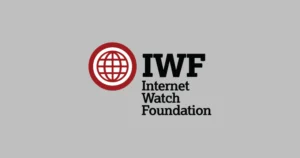How to report online harm
If your child comes across harmful content online or experiences harm, you can report it in different ways.
Explore how with the different sections below.

Quick reporting organisations
You can report serious harm to the following organisations.
Reporting specific issues
If you need help with a specific issue, explore the ways to get support below.
Report it to the school
If the person or people targeting your child are from their school, we recommend contacting the school directly. All schools should have a policy around bullying to help. You can contact your child’s teacher, Head of Year, Safeguarding Lead or any other staff member you trust.
If you don’t believe the school has taken appropriate action, you can report it to the school’s governing body, local education authority and other places. Citizens Advice has more guidance here.
Report it on-platform
Report any bullying or hate that your child experiences to the space in which it happens. For example, if someone sends nasty messages to your child on TikTok, you can report the user.
Explore more guidance on reporting on social media or in video games below.
Report it to the police
If the content is sexual, targeted at your child’s ethnicity, gender, disability or sexuality, if threats are being made to harm your child or incite your child to harm themselves, then consider reporting the activity to the police.
You can do this through CEOP or the non-emergency line (101).
For more support, visit the Cyberbullying Advice Hub.
Report it on-platform
All safe social platforms have community guidelines. Generally, they disallow sexual or violent content, especially that which is graphic. Review the community guidelines of each platform before making a report.
Use built-in reporting tools to report inappropriate content. This tool is usually represented by a flag or can be accessed via 3 dots on the screen. Make sure to choose the correct description and provide evidence where requested.
Report it to the police
If you think the content depicts criminal behaviour, you can make a report to the local police by calling the non-emergency number (101).
In the case of live streams where someone is in immediate danger, call 999.
For more support, visit the Inappropriate Content Hub.
Report it on-platform
If someone sends a nude or otherwise sexual image to your child, using built-in reporting tools to flag the user.
You can also use these tools if your child has shared images of themselves.
Report it to the school
If another child at your child’s school has sent a nude image or made sexual comments, make sure to inform the school so they can take action.
You can learn more about child-on-child abuse here.
Report it to CEOP
CEOP tackles the sexual abuse and exploitation of children and young people. If someone is exploiting (or trying to exploit) your child, or if they are otherwise sexually targeting your child, report them to CEOP.
Use the Report Remove tool
If your child has shared sexual images of themselves online, use Report Remove to get these images taken down. If your child is now an adult, you can contact IWF or use Take It Down.
Use the Report Remove tool here.
For more support, visit the Sexting Advice Hub or explore our guide to Sextortion.
Report it to the school
If someone is grooming your child, make sure the school is aware. They can help put a plan in place to make sure no one unfamiliar is meeting your child at the school gates. They can also pick up on any troubling behaviour.
Report it to CEOP
CEOP (Child Exploitation and Online Protection) works to tackle the sexual abuse and exploitation of children and young people. As a part of the National Crime Agency, this is the best route to take to deal with this behaviour online.
Report it to IWF
The IWF (Internet Watch Foundation) works to remove child sexual abuse material from the internet. If you see sexual abuse imagery of children online, make sure to report it here.
You can report content to IWF here.
If you are trying to get content of your own child removed, make a report through Report Remove instead.
For more support, visit the Online Grooming Hub.
Report it on-platform
If someone messages your child on social media or in a video game, asking for personal details or sharing an obvious scam, use built-in reporting tools. You can learn more about these tools below.
You can report content or users as committing scam or fraud on these platforms.
Report it to the bank or card provider
If your child has personal banking details or has used your credit card, contact the financial institution to report the fraud. They can help advise on the best actions to take and can cancel any affected cards or accounts.
This is only necessary where your child was a victim of a financial scam or provided their payment information somewhere.
Report it to Action Fraud
Action Fraud is the UK’s national fraud reporting centre. You can make a report to Action Fraud if your child is targeted by scammers or if they have witnessed/been victim to cyber crimes.
You can make a report to Action Fraud here.
For more support, visit the Online Scams Hub or Privacy and Online Identity Theft Hub.
Report it on-platform
If someone shares a message or content that promotes hate, spreads misinformation or is otherwise harmful, use in-built reporting tools on platforms.
Report it to the police
For immediate danger, contact 999 to make a report. Otherwise, call 101 to talk with someone and make a report.
The national police also offer a Prevent advice line that you can call at 0800 011 3764 to share any concerns.
To report hate crimes, use this form. Learn more about the link between hate and extremism here.
Report it to ACT
ACT (Action Counters Terrorism) encourages people to report any activity that could lead to terrorism. These reports can include people who are targeting your child to involve them in extremist acts.
Visit ACT and make a report here.
Use the Gov.UK reporting service
Gather as much evidence as you can, including direct links and/or screenshots of the extremist content. Then, use this tool on the gov.uk website to report online material that promotes terrorism or extremism.
For more support, visit the Radicalisation Advice Hub or Online Hate Hub.
Reporting on social media
The major social media platforms all have community guidelines around what is acceptable on their platforms. If you or your child comes across something that goes against these guidelines, you can use the built-in reporting tool or other processes they outline.
Learn about individual platforms by selecting them below.
Report Harmful Content
If you come across threats, impersonation, bullying, harassment, self-harm, suicide, abuse, violence, unwanted sexual advances or pornographic content online, use this reporting tool.
Reporting in video games
Just like major social media platforms, popular video games and platforms also have in-built reporting tools. Every user must also follow specific guidelines to continue using the services.
Learn about individual games and platforms by selecting them below.
Where to go for more help
If you’ve reported the issues and need further support, the following organisations can help.


